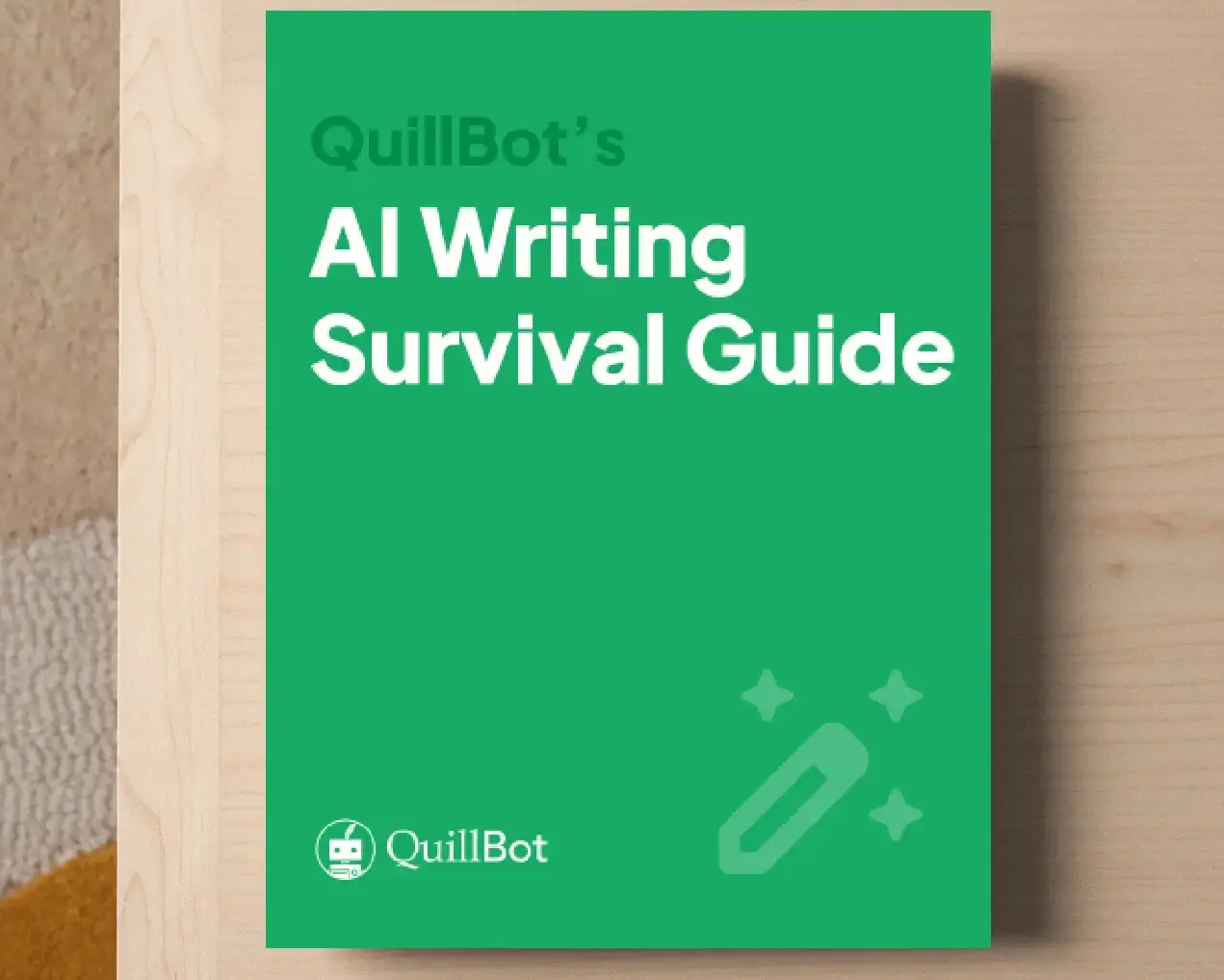Elevator Pitch | What It Is & Examples
An elevator pitch is a brief summary of your background, experience, and goals. An elevator pitch can also introduce a product or idea. It’s called an elevator pitch because it should be short enough that you can deliver it during an elevator ride.
QuillBot’s free AI text generator can help you write or polish your elevator pitch.
What is an elevator pitch?
An elevator pitch introduces you, conveys your skills and goals, and explains why you would be beneficial in a role, team, or organization. When introducing products or ideas, an elevator pitch explains what the product or idea does, who it’s for, and why it matters.
An elevator pitch is different from a sales pitch, as it does not have to be used in buyer-seller relationships or push the sale of a specific product or service. Instead, the objective is to convey the pitched concept in a concise, attention-grabbing way. An elevator pitch could focus on a personal career goal, a business idea, a product or service, or even a cause or initiative.
How long should an elevator pitch be?
An elevator pitch should be 60 seconds or less. The phrase “elevator pitch” comes from the idea that the pitch should be able to be delivered in the time of an elevator ride.
There are several proposed origins of this phrase, but they all stem from the idea of being prepared to pitch yourself or your idea at a moment’s notice—like in the brief window of time you might have someone’s attention during an elevator ride.
How to write an elevator pitch
You can follow these four steps to write an elevator pitch. Remember that you can have various elevator pitches for different contexts, so don’t try to include all of your details in one. Rather, keep each elevator pitch focused on a specific context or goal, and if needed, write more than one.
1. Introduce yourself
First, introduce yourself. State your name and give a brief description of who you are. This could include your profession, area of study, or the industry you’re involved in. Think about what’s most relevant for the listener and context.
For example, if you’re attending a professional event, highlight your career or technical skills. But if you’re at a creative meetup or a casual setting, you might emphasize your interests, creative work, or side projects.
- I’m Priya Desai, a digital marketing specialist with 6 years of experience in e-commerce.
- I’m Maya González, a senior at the University of Barcelona studying environmental science. I’m currently researching sustainable water management in urban areas.
- I’m Reya Diallo, an independent filmmaker exploring Afro-European identity through short documentaries and visual essays.
2. State what you do or offer
Next, explain what you do, what you offer, or what problem you solve. This could be a skill set, service, product, or area of expertise. Ideally, whatever you offer should be useful or relevant to your audience. Your elevator pitch must be short, so keep this part simple and direct.
For example:
- What do you help people or organizations do?
- What solution do you offer for a specific problem?
- What skills will you bring to a job or internship?
- What results do you usually deliver?
- What’s one thing you’re known for doing well?
- I help small businesses grow their online presence through content strategy and SEO.
- I design accessible mobile apps for healthcare providers and patients.
- I lead volunteer programs that connect local students with environmental restoration projects.
3. Add what makes you unique
Then, differentiate yourself. What sets you apart from others with similar skills or experience? This might be a specific approach, a unique background, a particular result you’ve achieved, or a personal quality that shapes how you work. Include one clear point that adds depth or memorability to your elevator pitch.
- What sets me apart is my ability to translate complex data into user-friendly insights for non-technical teams
- My background in both law and education helps me bridge gaps between policy and practice.
- I bring a cross-cultural perspective to my work thanks to my experience living and working in five countries.
4. Include a call to action
End with a simple call to action that encourages the listener to follow up, connect, or engage further. You can mention what you’re looking for, what you’re currently working on, or what kind of opportunities you’re open to.
- I’m currently looking for freelance clients and would love to hear about your upcoming campaigns.
- I’m exploring internship opportunities in conservation research and am eager to connect with people in the field.
- I’d love to collaborate with others working at the intersection of tech and social impact.
Elevator pitch tips
Once you’ve written your elevator pitch, the next step is to refine and practice it. A good pitch should feel natural, not rehearsed. Some tips for making your pitch more effective are:
- Keep it short: Aim for 30–60 seconds. If you go longer, you risk losing your listener’s attention. Focus only on the most relevant details for your goal or audience.
- Be persuasive: Since it’s so short, you need to make sure your pitch is compelling. It needs to spark your audience’s interest. Keep your message focused and speak confidently.
- Adapt it to the audience: Customize your pitch depending on who you’re talking to. What matters to a hiring manager may not matter to a potential investor or collaborator. Have a few versions ready for different situations.
- Speak clearly: Use simple, direct language. Avoid jargon unless it’s specific and appropriate for the audience. Enunciate, don’t ramble, and be mindful of speaking too fast due to feeling nervous.
- Practice until it feels natural: You should be able to say your pitch comfortably in conversation, and it shouldn’t sound like you’re reading a script. Practice aloud, ideally with someone who can give feedback, and adjust anything that feels awkward or unclear. If you don’t have anyone to practice with, try recording yourself.
- Be ready for a follow-up: A good pitch opens the door for further conversation. Be prepared to answer a question like “Tell me more about that project” or “How did you get into that line of work?” Your elevator pitch isn’t the whole story; it’s just the first few words.
- Be positive and open: Body language and facial expressions matter. Make sure to smile, keep your body relaxed, and keep your energy levels enthusiastic. Don’t frown, cross your arms, or speak in a monotone way.
Elevator pitch template
The elevator pitch template below follows the four steps from above about how to write an elevator pitch. Simply change the information inside the square brackets to what’s true for you.
Elevator pitch examples
Below you can find some examples of elevator pitches for different contexts to help you get a feel for how yours may sound.
A professional elevator pitch focuses on your experience and career-related skills. They’re often used for sourcing new opportunities, looking for partnerships, or simply networking.
A student elevator pitch highlights the student’s field of study, skills, and any special projects or extracurriculars. They’re often used to find internship opportunities or to connect with potential mentors.
Freelancers and creatives may write more creative or emotional elevator pitches. These pitches may focus on finding new clients and projects or connecting with potential collaborators.
Startups often prepare an elevator pitch to introduce their product or service and find investors, partnerships, and collaborators.
Frequently asked questions about elevator pitch
- What’s an elevator pitch generator?
-
An elevator pitch generator helps you quickly craft a concise, compelling introduction about yourself or your idea that you can share with your audience in 60 seconds or less.
To generate your elevator pitch, try QuillBot’s free AI text generator.
- How do I create a career fair elevator pitch?
-
To create a career fair elevator pitch, highlight your name, area of study or experience, skills, and career goals in under 60 seconds.
End your elevator pitch with a call to action to invite your audience to take next steps, like connect on LinkedIn or interview you for an internship.
QuillBot’s free AI text generator can help you write or refine your career fair elevator pitch.
Cite this Quillbot article
We encourage the use of reliable sources in all types of writing. You can copy and paste the citation or click the "Cite this article" button to automatically add it to our free Citation Generator.
Santoro, K. (2025, September 08). Elevator Pitch | What It Is & Examples. Quillbot. Retrieved November 15, 2025, from https://quillbot.com/blog/professional-writing/elevator-pitch/

